





The present threatened status of the six plant species on this page may have little to do with the insects that pollinate or predate them. We don't really know, because the research is absent, or incomplete. But for each species, we at least have observations (and photos) of the common floral visitors. We present these here to celebrate their individual beauty, and perhaps to incentivise further study. Any questionable speculation attributed solely to ... David Cappaert, cappaert@comcast.net
Oregon: Willamette daisy (Erigeron decumbens)
Oregon: Golden paintbrush (Castilleja levisecta)
Oregon: Kincaid's lupine (Lupinus oreganus)
Washington: Umtanum Desert wild buckwheat (Eriogonum codium)
Washington: White Bluffs bladderpod (Physaria douglasii ssp. tuplashensis)Washington: Wenatchee Mountains checkermallow (Sidalcea oregana var. calva)
What we know: The Institute for Applied Ecology (Corvallis OR) has complete occurence and relative abundance data for 4 years at 5-7 sites each season. Details: Pollination biology and ecology of Willamette Valley prairies and Willamette daisy.
Taxa: We observed 171 distinct taxa, broadly representing generalist species. "Five identification categories represented 47.9% of all observed Willamette daisy visitations: Toxomerus marginatus (syrphid, n=464), Halictus ligatus (bee, n=287), Sphaerophoria sulphuripes (syrphid, n=243), Eupeodes fumipennis (syrphid, n=197), and Lasioglossum sp. (bee, n=193). These aggregate numbers suggest that Willamette daisy benefits from a very broad mix of floral visitors. We also saw striking variation between years and sites. E.g., in one year syrphids accountrd for the majority of visits; in the following year, the same syrphids were virtually absent. Yet adequate pollination was (in most cases, as determined by pollen supplementation studies) achieved. I.e., Willamette daisy pollination appears to rely on a rotating cast of pollinators that provide backup and redundancy.

Willamette daisy (purple), among an admixture of flowers with which it shares insect visitors.
|

Eupeodes fumipennis

|

Sphaerophoria sulphuripes

|

Platycheirus stegnus. Compare the sparse pollen load of the syrphids in this row with the pollen laden bees below. This highlights a perennial issue with visitation counts: Visitation frequency does not equal efficacy.
|

Halictus ligatus
|

Lasioglossum titusi
|

Lasioglossum/dialictus
|

Hylaeus sp
|

Nomada sp
|

Bombyliidae
|
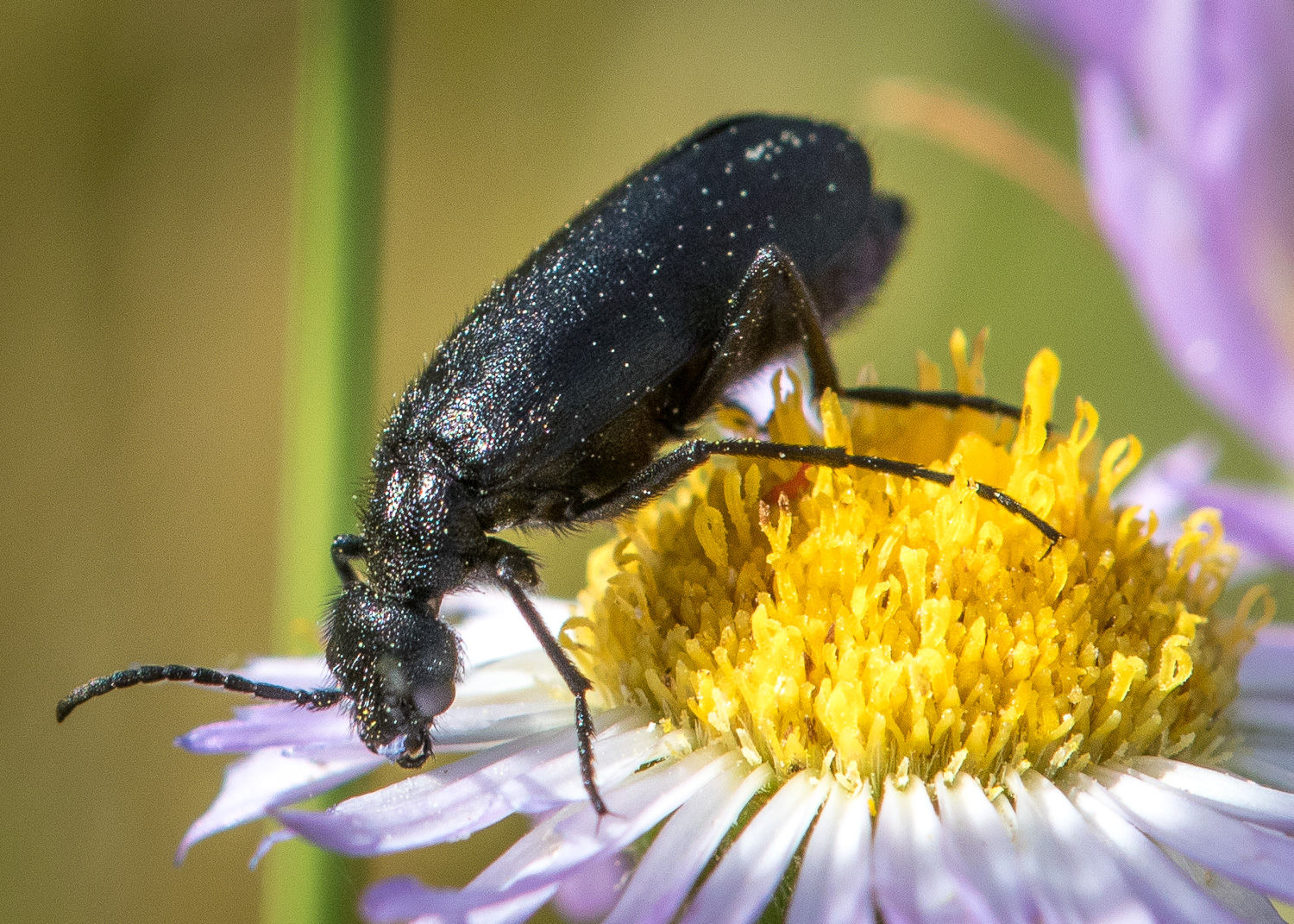
Epicauta puncticollis
|

Thrips on Willamette daisy. Such an infestation is common in stressed plants.
|
What we know: In the spring of 2024 The Institute for Applied Ecology (Corvallis OR) counted insect pollinators on patches of Kincaid's lupine at three sites in late spring 2024.
Taxa: For the sites I personally monitored, there were 24 taxa and 1107 individuals observed. The distribution was uneven: Bombus vosnesenski accounted for 77%, and all Bombus accounted for 86% of observations. Minor players included Osmia spp and Eucera sp.; remaining species were barely detectable. Taken together, these data might suggest that Kincaid's lupine is largely dependent on B. vosnesenskii. However: would other taxa compensate if B. vosnesenskii populations crashed? The other Bombus and Eucera in particular were abundant on other floral resources in the same sites, and clearly capable of foraging on lupine. A reasonable hypothesis: B. vosnesenskii competitively excludes other pollinators which would provide adequate pollination in its absence.
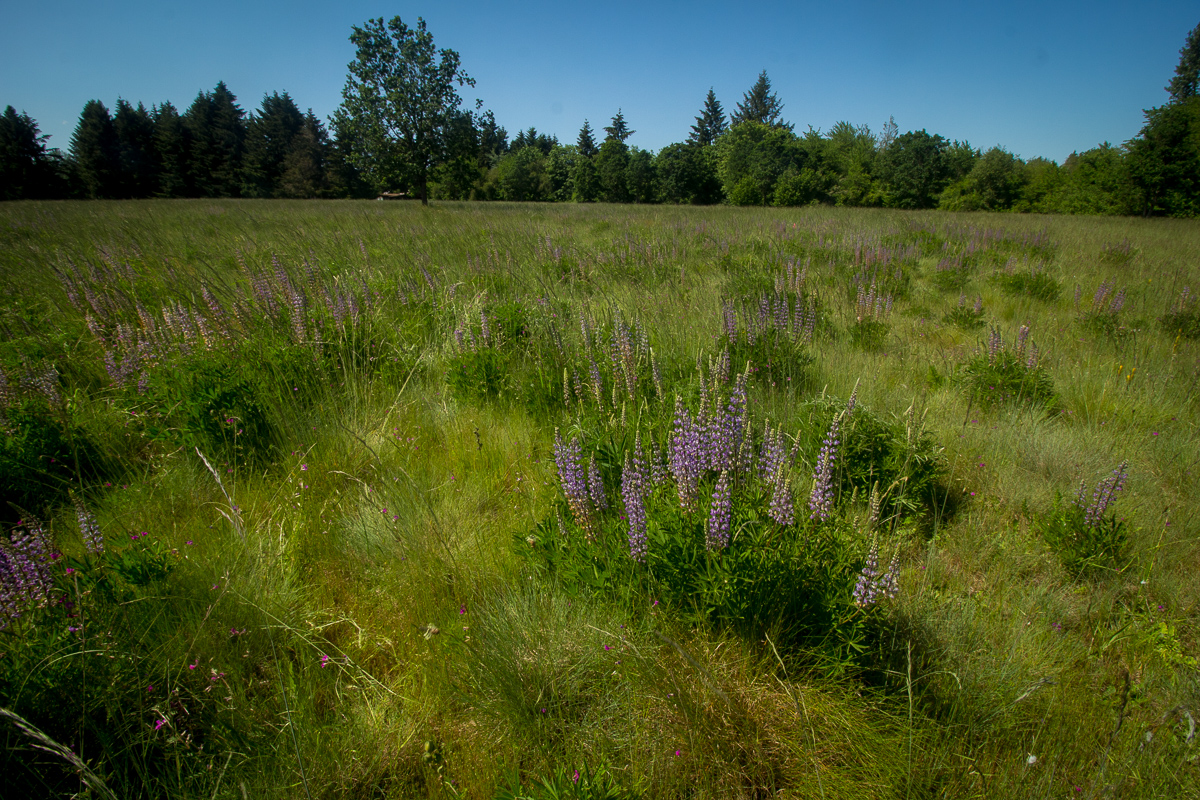
Kincaid's lupine at Big Spires |

|

Osmia cf. albolateralis.
|

Osmia atrocyanea
|

Osmia trevoris, according to Molly Rightmyer, who notes: (likely a junior synonym of O. inurbana)
|

Osmia lignaria
|

Eucera female
|
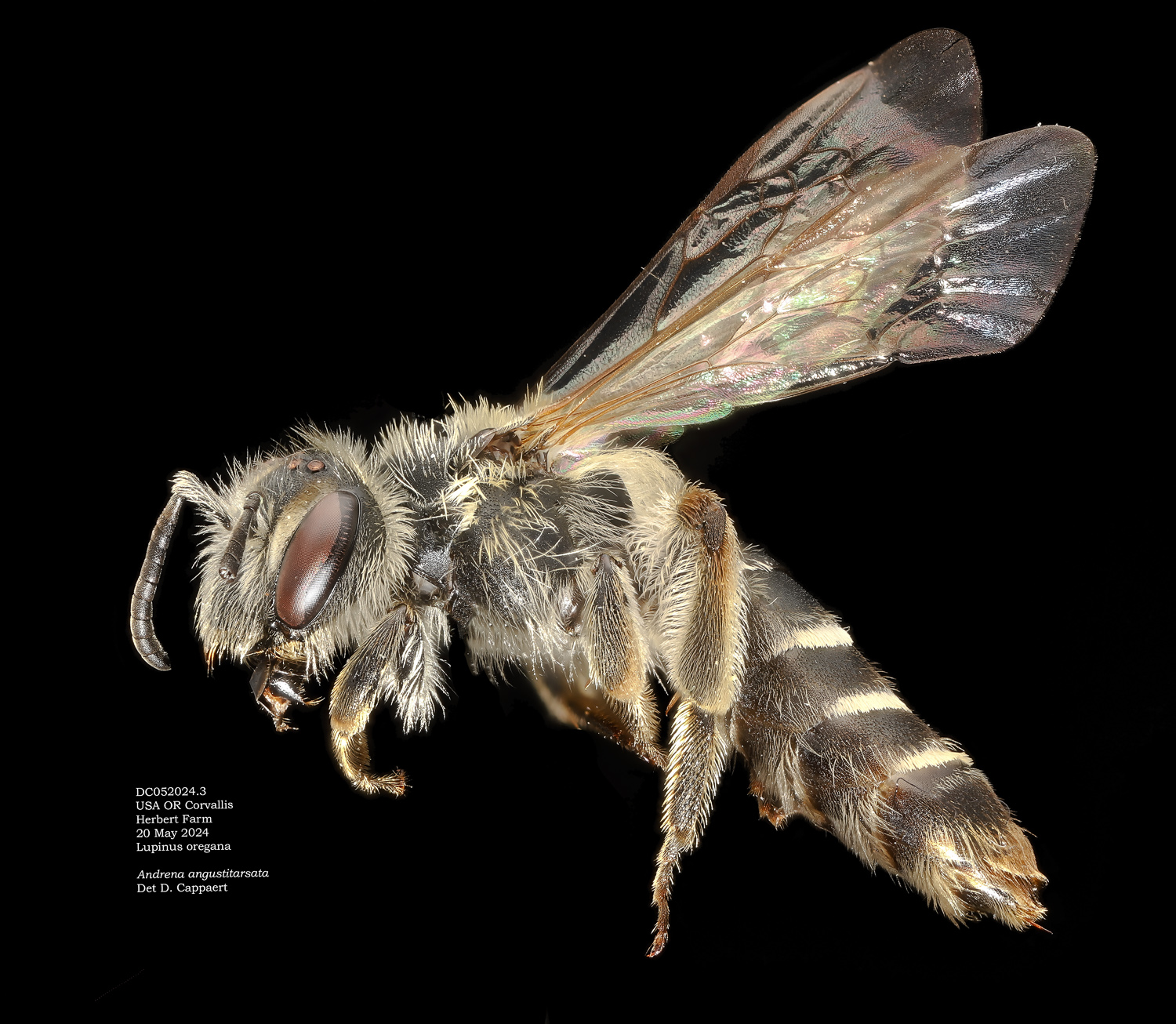
Andrena angustitarsata
|

Hoplitis sp, Herbert Farm.
|


Lupine aphids and predators (syrphid larva and adult) are common.
|

|

|

|

|

|

|

|

|

|

|
Note: This plant was de-listed by USFWS in 2023. The move was controversial, opposed by members of the advisory team reporting to USFS. Principal issues concern how populations are assessed, and whether populations are stable in the absence of aggressive outplanting efforts. We don't know whether pollination is a limiting factor; the Institute for Applied Ecology conducted pollen supplementation studies in 2024, that may provide insight.
What we know: In May/June of 2024, I counted paintbrush plants in plots of ~800 plants visible from a single vantage, at 3 sites. I recorded number of visits in a timed interval, and tracked the constancy of foraging.
Taxa: Queens of the California bumblebee, Bombus californicus, were the only visitors to paintbrush, out of 365 recorded visitations. Many other pollinators, including at least 3 other Bombus were actively foraging on other plants within paintbrush arenas, while ignoring paintbrush. That B. californicus is the exclusive pollinator of paintbrush is well established by many other observers. This would seem to raise a red flag regarding the sustainability of natural stands (which is in question) if B. californicus is threatened (e.g., by B. impatiens, a recently introduced eastern species that appears to be a competitive threat to natives).

Golden paintbrush, Castilleja levisecta
|

Bombus californicus
|
From Quamash EcoResearch: From Quamash EcoResearch: Umtanum Desert wild buckwheat (Eriogonum codium) is a beautiful, long-lived woody shrub that exists only along the Columbia River bluffs in the Hanford Reach of Washington state. In 2022, we surveyed and identified pollinators of this rare plant, finding flower visitation by a surprising diversity of wasps. We also documented seed predation and translocation by ants. Exploring the basic ecology of desert buckwheat is a fundamental step toward conservation and recovery.

Ichneumonidae: Anomalon sp.
|

Pompillidae: Episyron snowi
|

Sphecidae: Ammophila sp.
|

Eumenidae: Cephalodynerus sp
|

Cephalodynerus sp.
|

Crabronidae: Tachysphex sp.
|

Crabronidae: Tachysphex sp.
|

Maricodynerus sp
|

Parancistrocerus sp.
|

Tachytes sp.
|

Crabronidae: Cerceris convergens
|
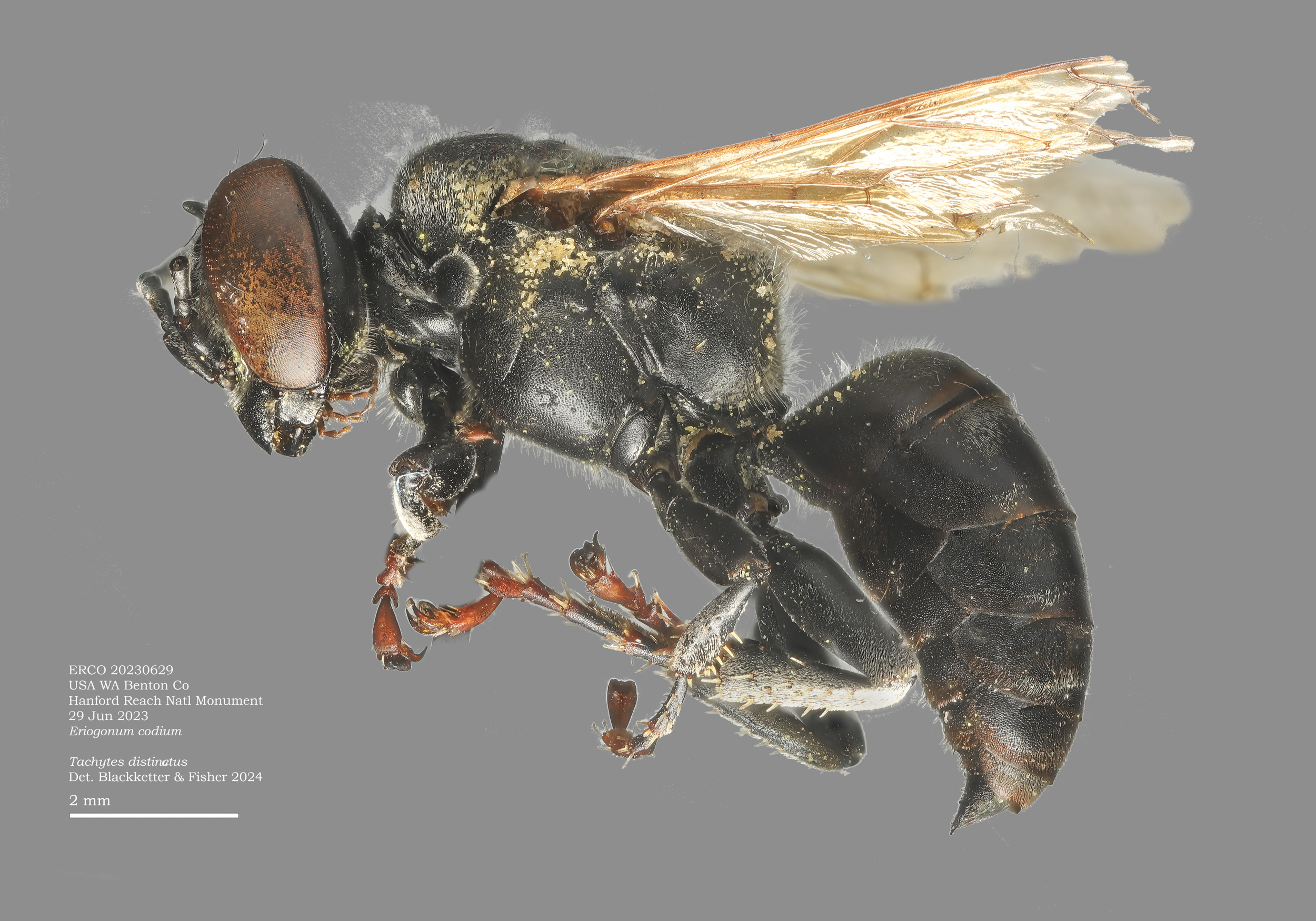
Tachytes distinctus (male)
|

Tachytes distinctus (female)
|

Crabronidae: Eucerceris
|

Philanthus maculatus
|
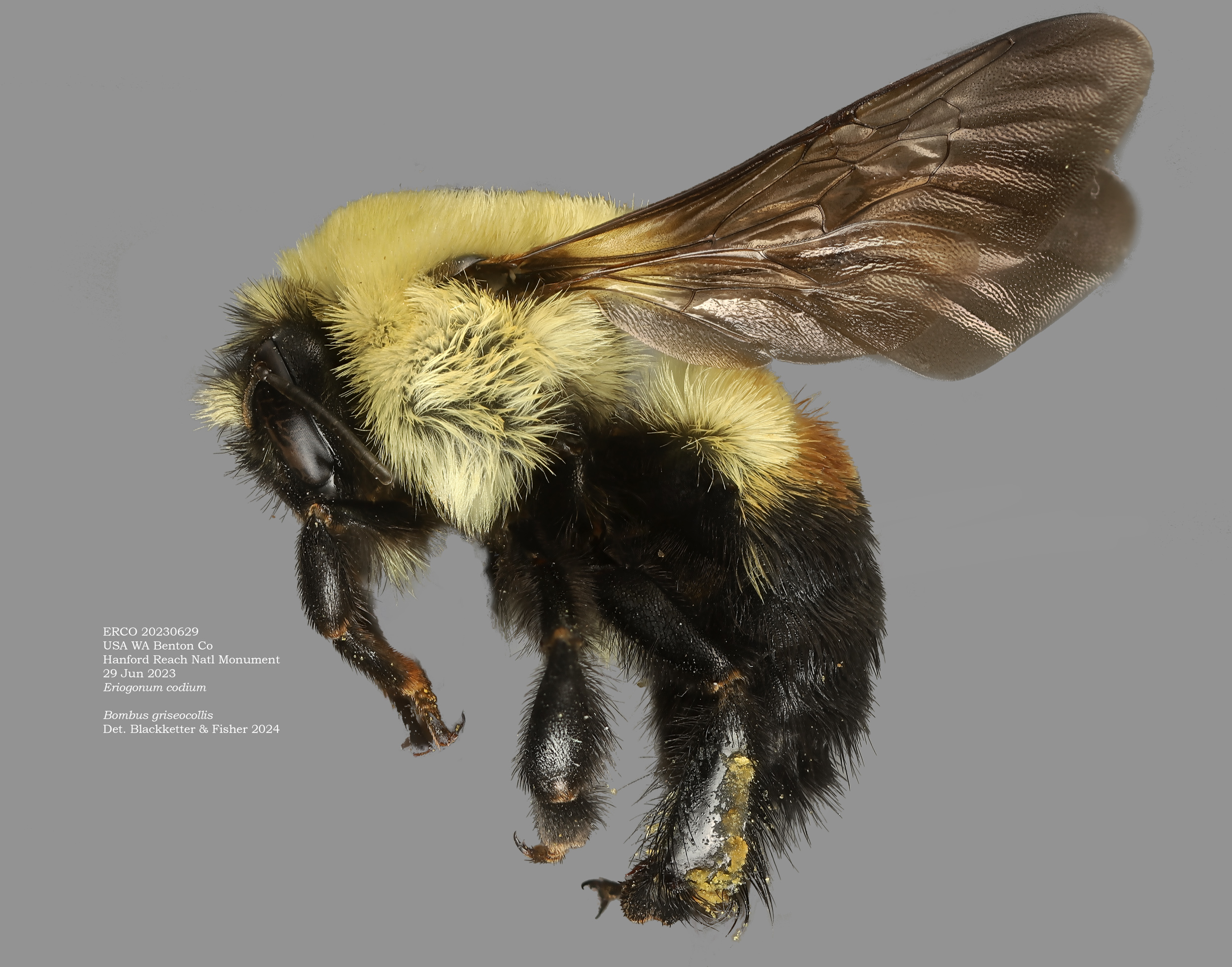
Bombus griseocollis
|
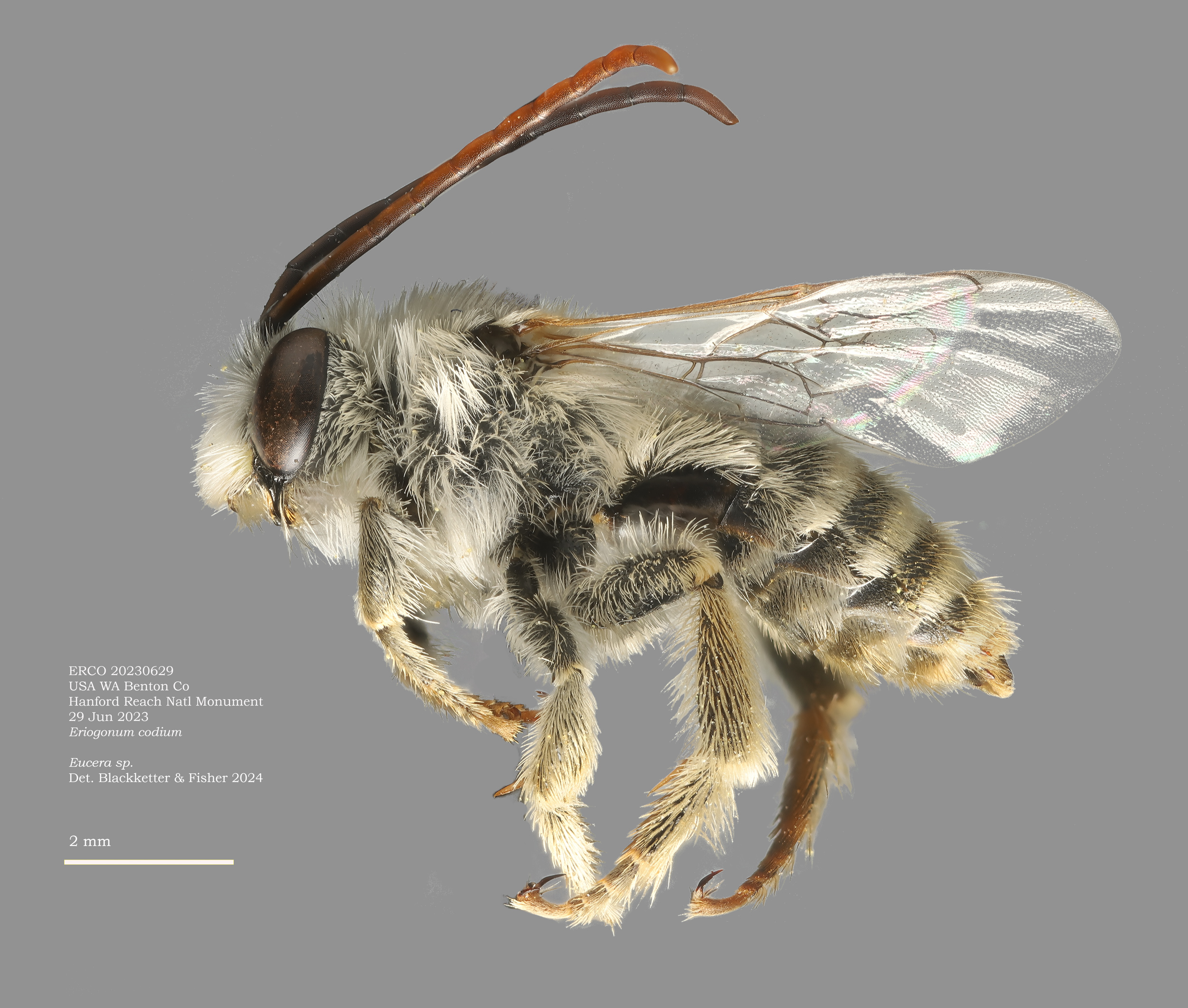
Eucera (male)
|
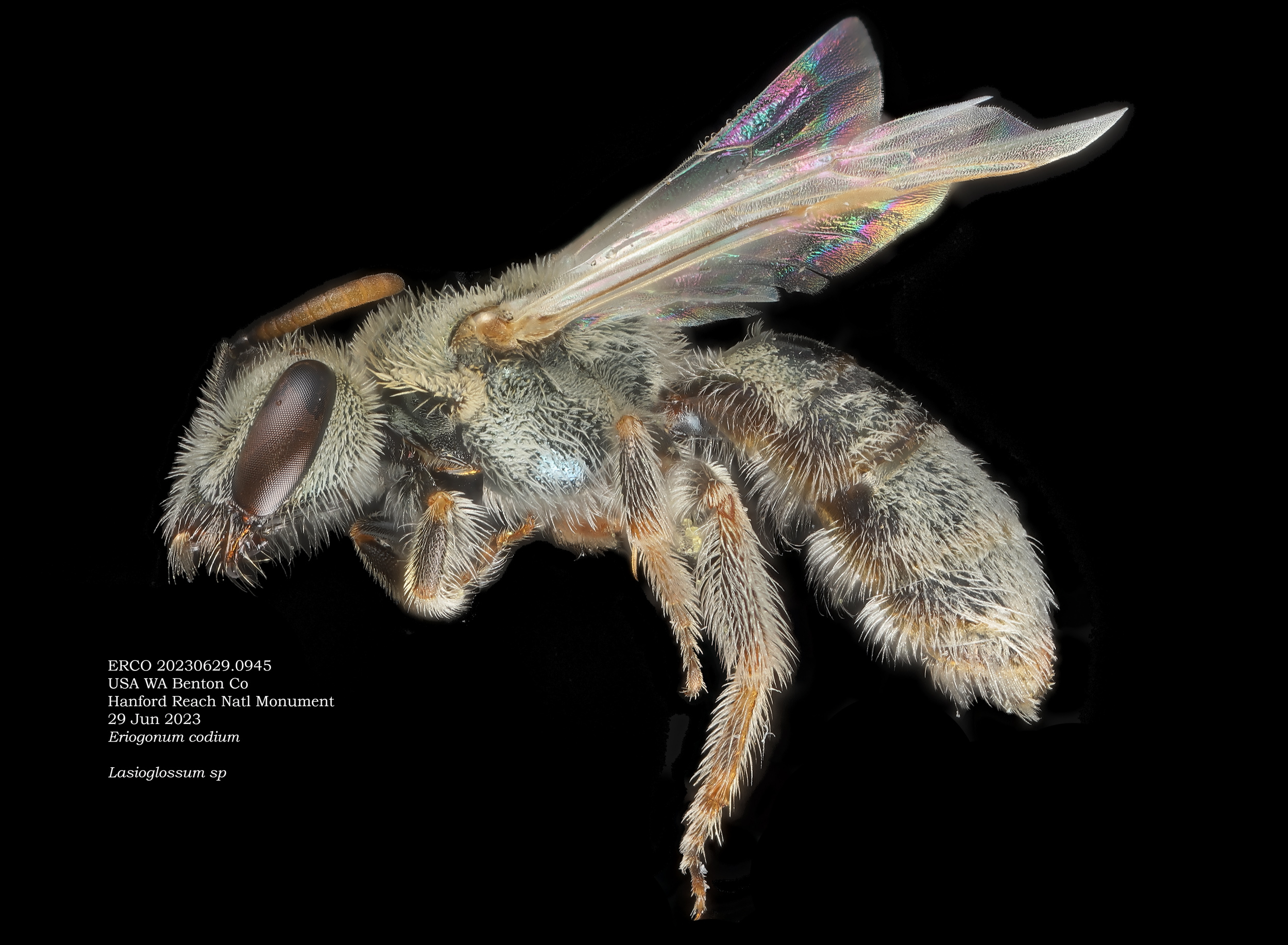
Lasioglossum (dialictus)
|

Lasioglossum (dialictus)
|
From Quamash EcoResearch: White Bluffs bladderpod (Physaria douglasii ssp. tuplashensis) is a unique subspecies of a common desert plant. This plant is apparently adapted to the unusual soil chemistry of the crumbly, white caliche exposed along the Columbia River bluffs in the Hanford Reach. In 2022 and 2023, Quamash investigated the potential competitive effects of invasive cheatgrass on bladderpod, and simultaneously initiated a demographic study to help understand which life stages might be most vulnerable to mortality. This year, we continue our work to explore the life history of this plant by documenting the diversity of pollinators and other visitors to White Bluffs bladderpod flowers.

Ichneumonidae
|

Sphecidae: Podalonia sp.
|

Crabronidae: Tachytes sp.
|

Pompillidae: Aporus luxus
|

Pompillidae: Aporinellus sp.
|

Eumeninae: Euodynerus
|

Crabronidae: Astata sp.
|

Apidae: Triepeolus sp.
|

Apidae: Epeolus sp.
|
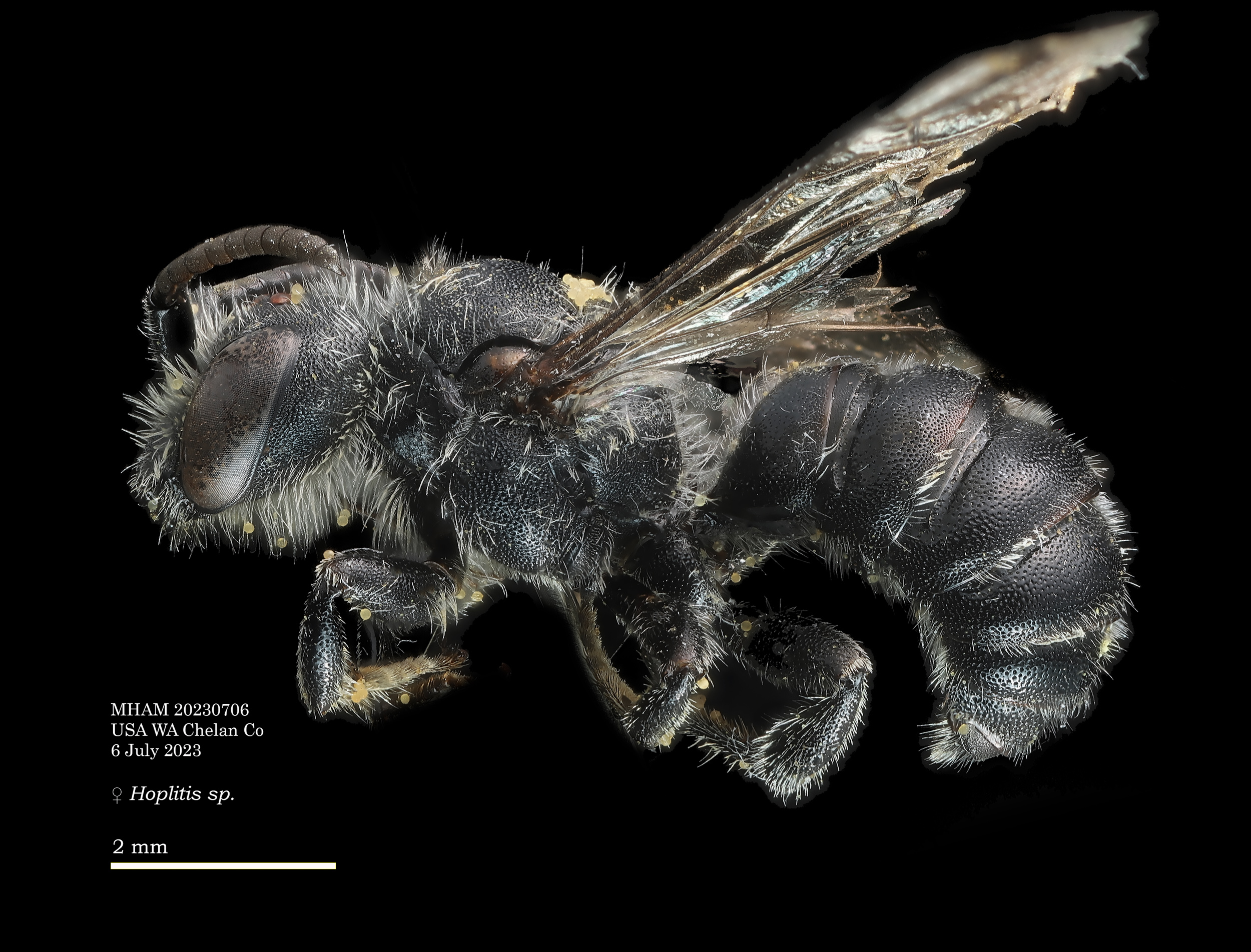
Megachilidae: Hoplitis: Euodynerus
|

Crabronidae: Bicyrtes sp.
|

Andrenidae: Andrena scurra
|

Andrenidae: Andrena walleyi
|

Andrenidae: Andrena walleyi
|

Andrenidae: Andrena raveni
|

Apidae: Eucera sp.
|

Apidae: Anthophora sp.
|

Apidae: Anthophora sp.
|

Megachilidae: Osmia bruneri
|
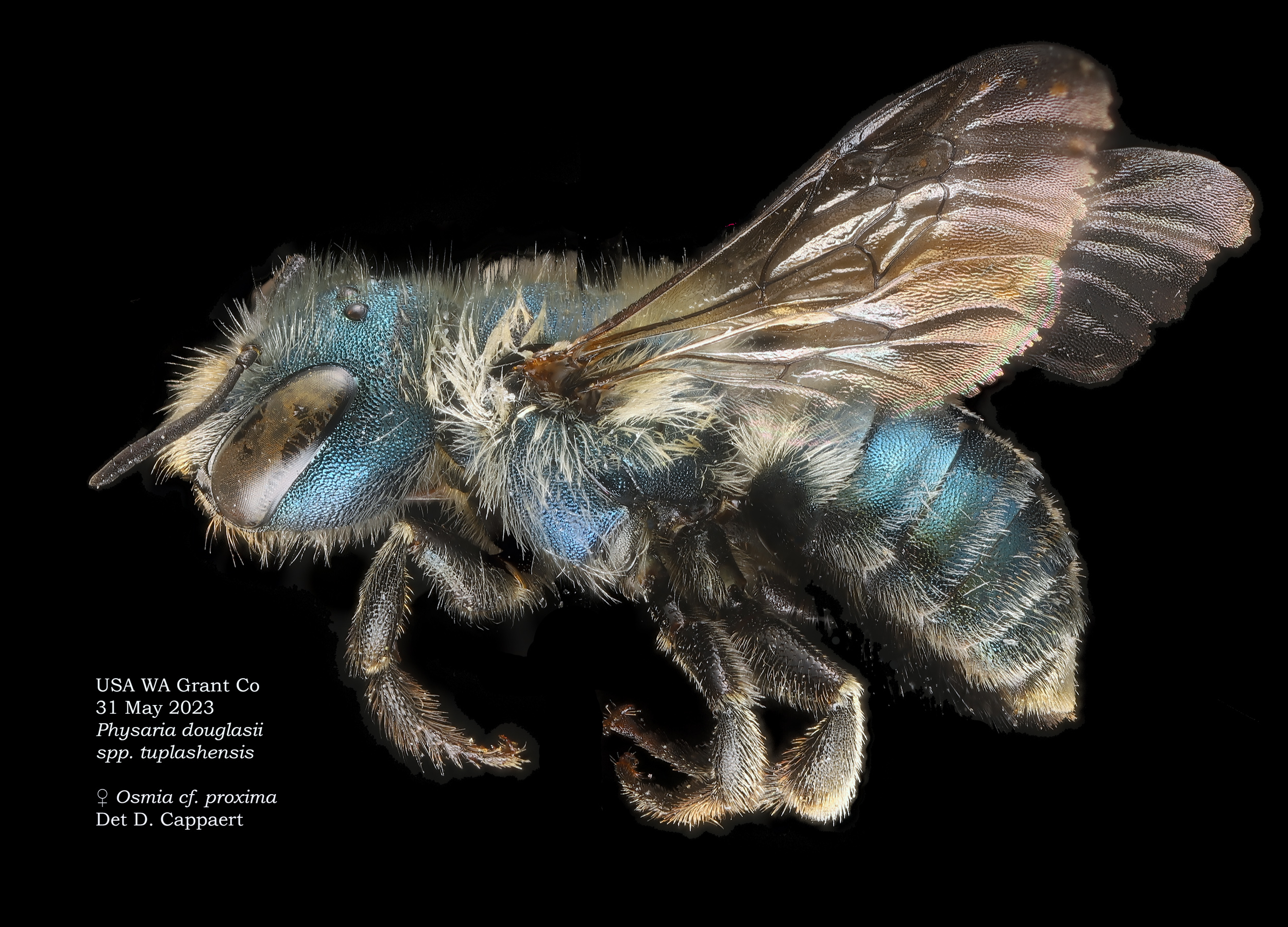
Megachilidae: Osmia proxima
|
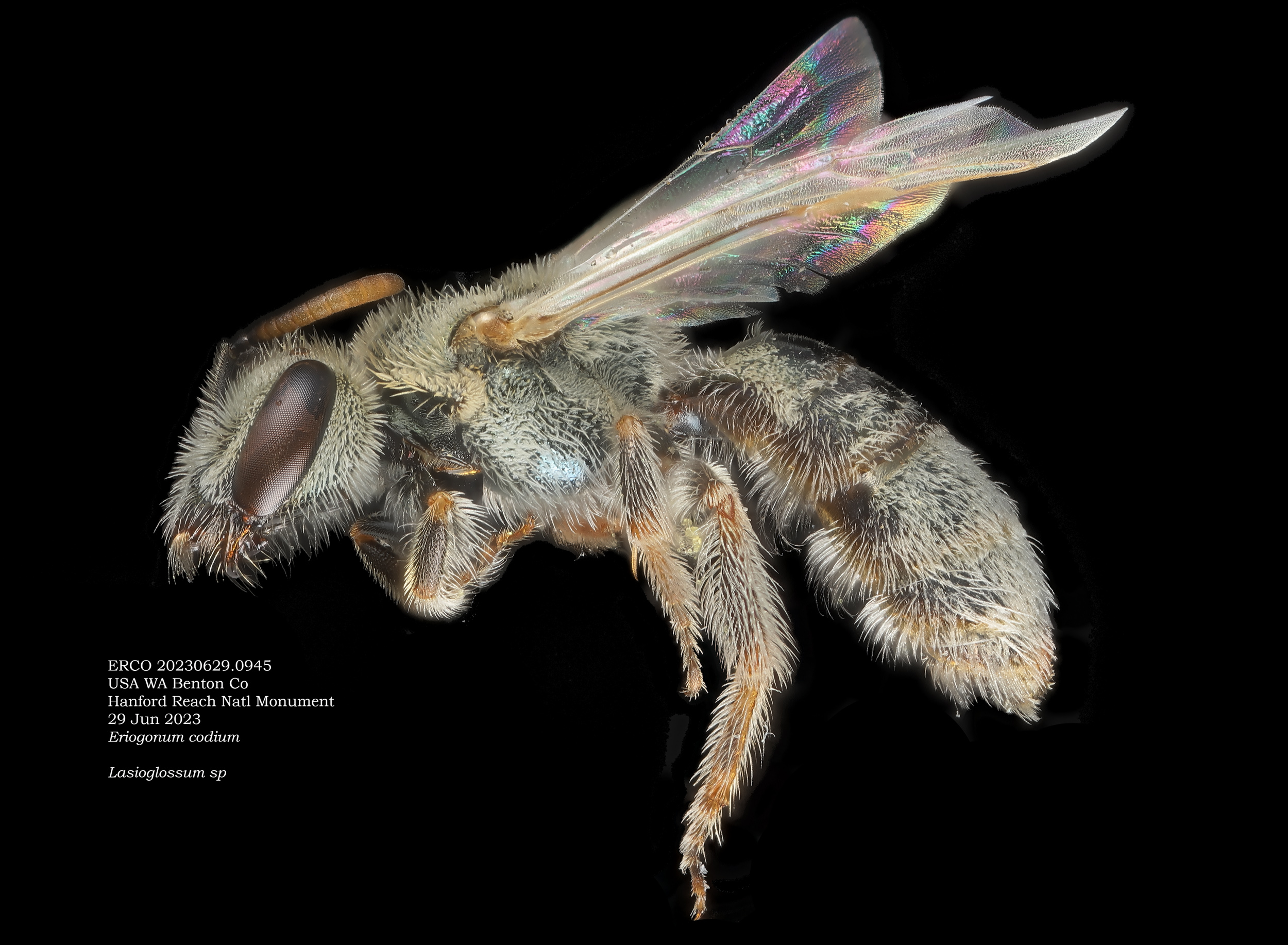
Lasioglossum (dialictus)
|
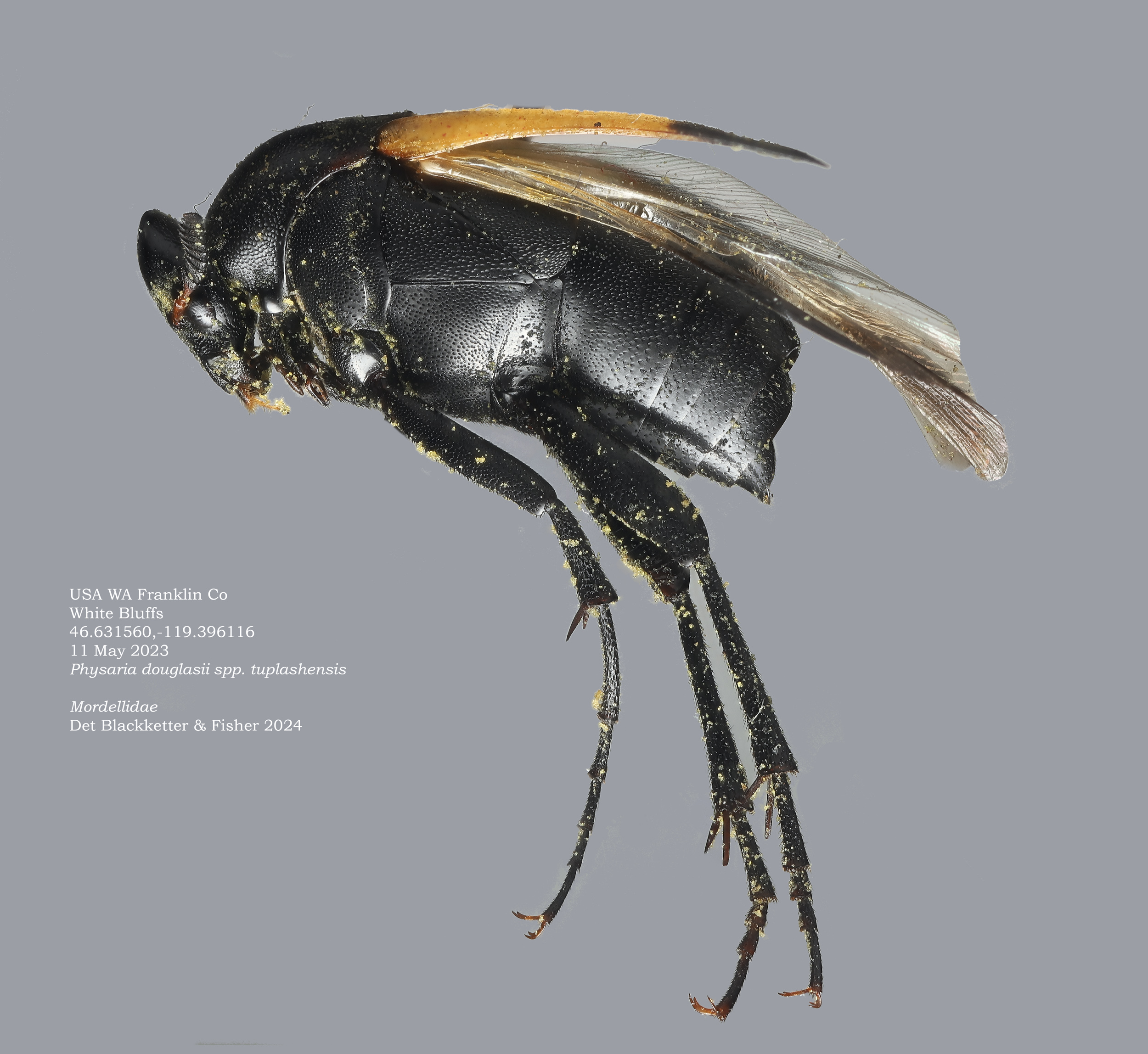
Macrosaigon sp
|
From Quamash EcoResearch: A hundred years ago and more, our Pacific Northwest grasslands and savannahs bore the cheerful blooms of multiple species of checkermallows (genus Sidalcea). Their delicate white, pale pink, or bright pink flowering stalks would have been common all the way from the lowland wet prairies of Oregon up to mid-elevation montane meadows in Washington and beyond. Though today many of our grassland habitats are much smaller and rarer, checkermallows still bring showy floral displays to late spring across our region. Quamash EcoResearch is currently working on conservation of a beautiful and charismatic Sidalcea subspecies, the rare Wenatchee Mountains checkermallow (Sidalcea oregana var. calva). This plant is listed as an endangered species both federally and in Washington state. Many checkermallow species coexist with specialist insect predators called checkermallow weevils (Macrorhoptus sidalceae) that feed on their seeds before the seeds are dispersed (predispersal seed predation). The weevils can have strong effects: our work has documented predispersal seed predation of 75-99% in Wenatchee Mountains checkermallow populations. This, of course, means very few seeds are available to start the next generation. Currently, we are working to determine whether the planned management of checkermallow habitat with prescribed fire will help control weevil impacts. We are also interested in natural predators that might historically have controlled the weevils. A tiny native wasp parasitizes the weevils in some Oregon checkermallow populations, and probably helps decrease their impacts, but it is not yet clear whether it is (or was) present in Wenatchee Mountains checkermallow. In the future, we are interested in exploring the life history of this tiny wasp, and determining whether increasing wasp populations might help increase checkermallow seed set.

Apidae: Bombus insularis
|

Megachilidae: Megachile dentitarsus
|
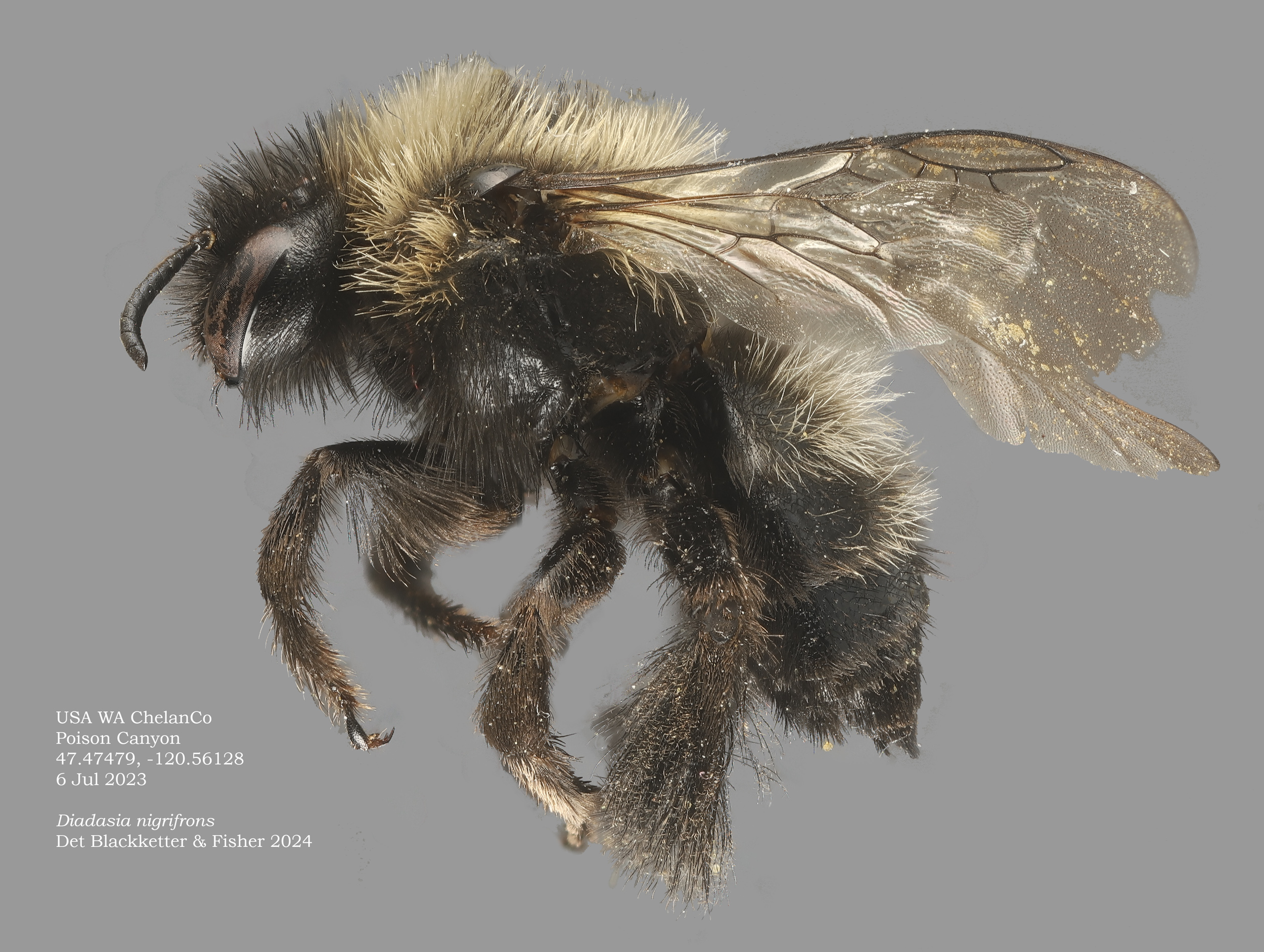
Apidae: Diadasia nigrifrons
|

Megachilidae: Stelis subemarginata
|

Megachilidae: Hoplitis fulgida
|

Megachilidae: Hoplitis sambuci
|

Euparagiinae: Euparagia sp.
|

Crabronidae: Cerceris nigrescens
|

Crabronidae: Oxybelus
|
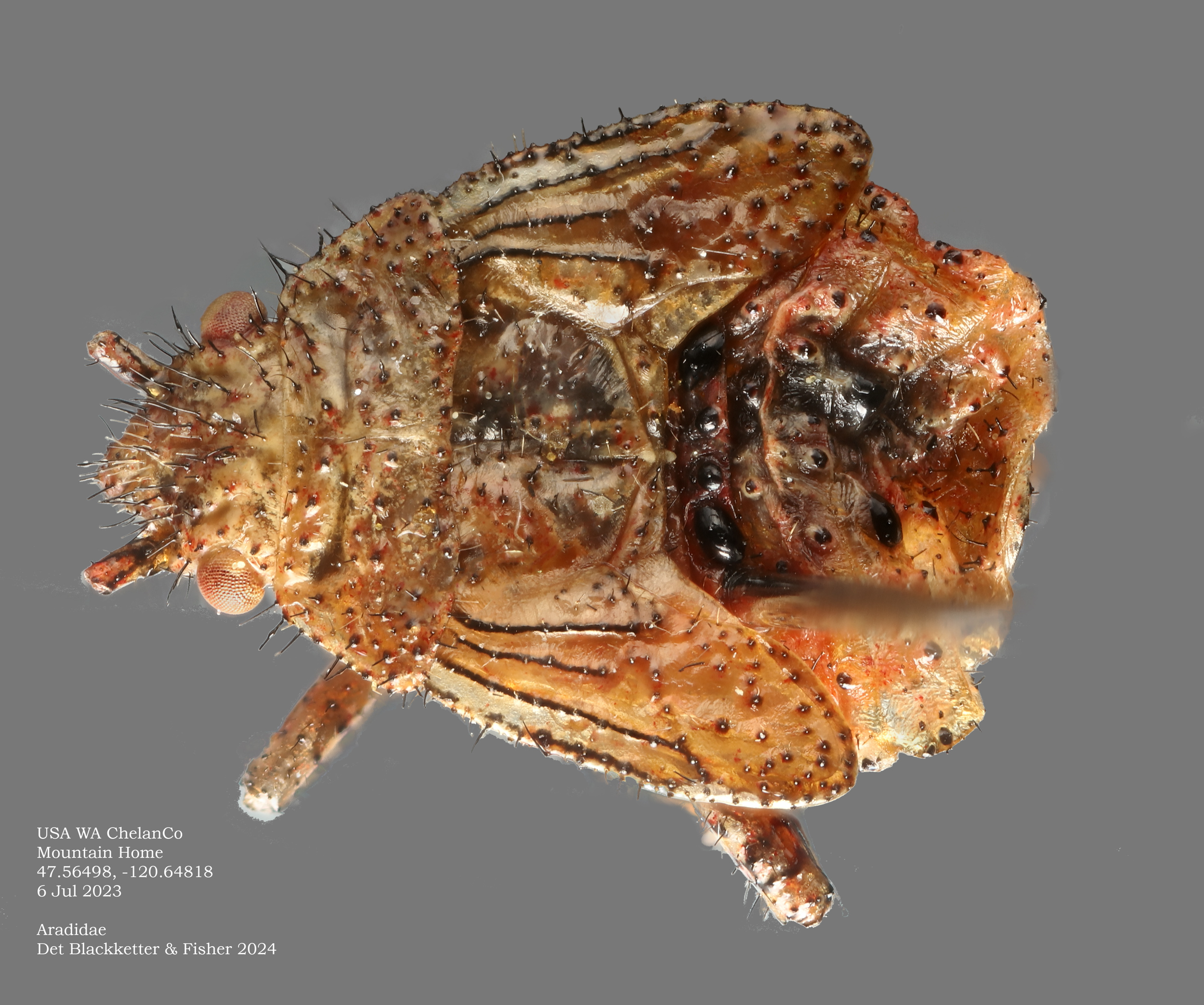
Aradidae
|

Megachilidae: Megachile relativa
|
The flower visitors pictured above are part of the beneficial insect community that supports a first step in plant reproduction: pollination and seed set. However for Sidalcea, most of the crop of large and abundant seed is consumed by weevil seed predators. This is well known among conservation groups that typically see >50% mortality of seeds for several Sidalcea species. In the case of S. oregana, the mortality has ranged from 75-99%. Clearly seed predation is an important aspect of the ecology and conservation of S. oregana var. calva (and perhaps others among the ~25 species in the western US). We are learning about the weevils - at least 3 species attack Sidalcea - and also the parasitoids - at least 4 species that may play a role in suppressing weevil populations (or as wasp hyperparasitoids).

Sidalcea seed and weevil larvae
|

Macrorhoptus sidalcea, reared from all Sidalcea hosts.
|

Bruchid (?) reared from Sidalcea seed.
|

Anthonoumus sp., reared from S. oregana.
|
Weevil parasitoids We have made very limited collections from S. oregana var. calva , which turned up a couple wasp species. The potential list is probably much longer; in 2024 Brooklyn Richards (Oregon State Univ) collected extensively from Sidalcea campestris. We found at least 6 likely parasitoids (as well as a couple of interesting wasps that were probably by-catch).

Pteromalid female, reared from most Sidalcea seed collections, including from S. oregana var. calva
|

Torymus sp., reared from S. campestris
|

Mesolobus sp.
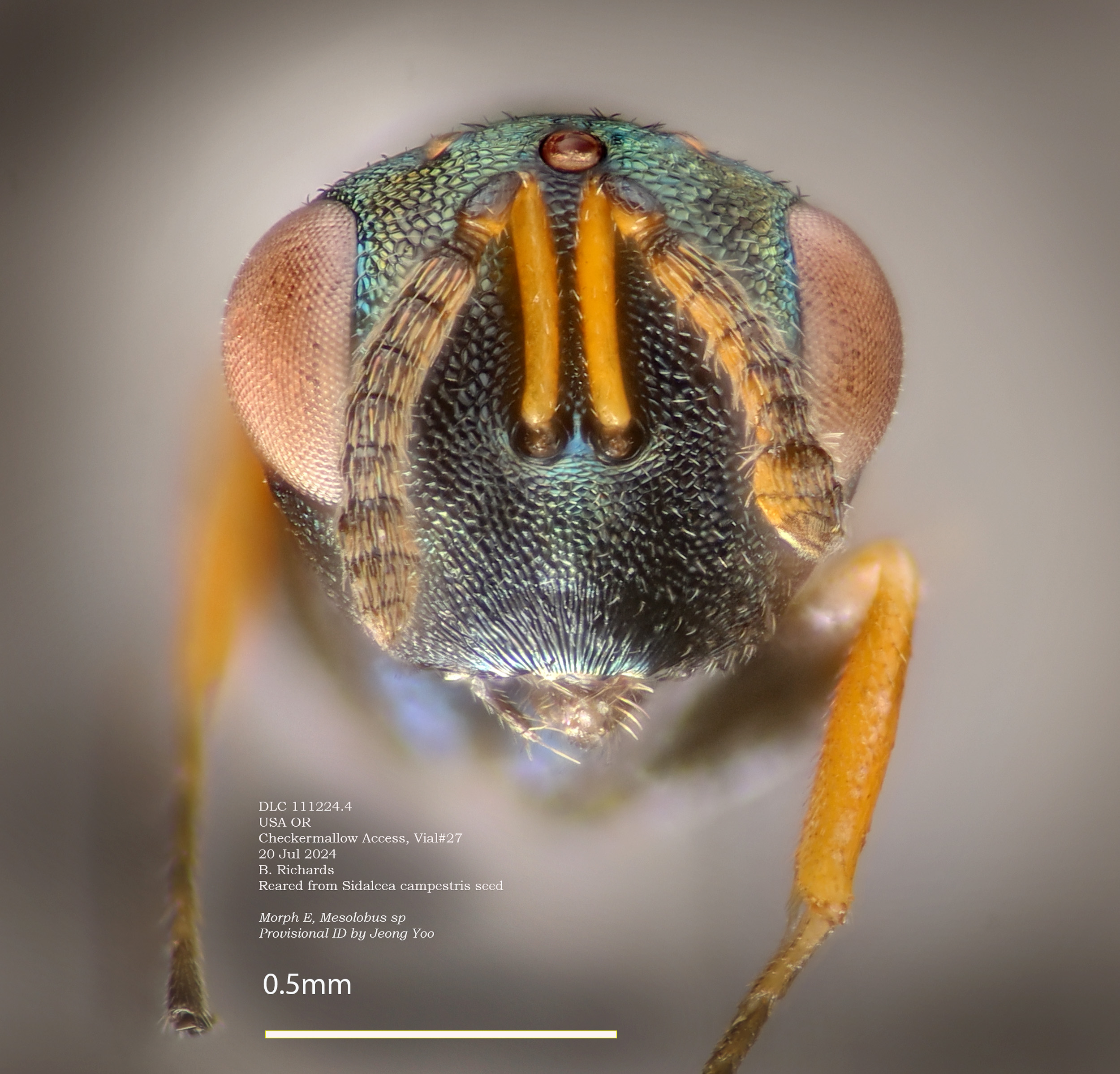
|
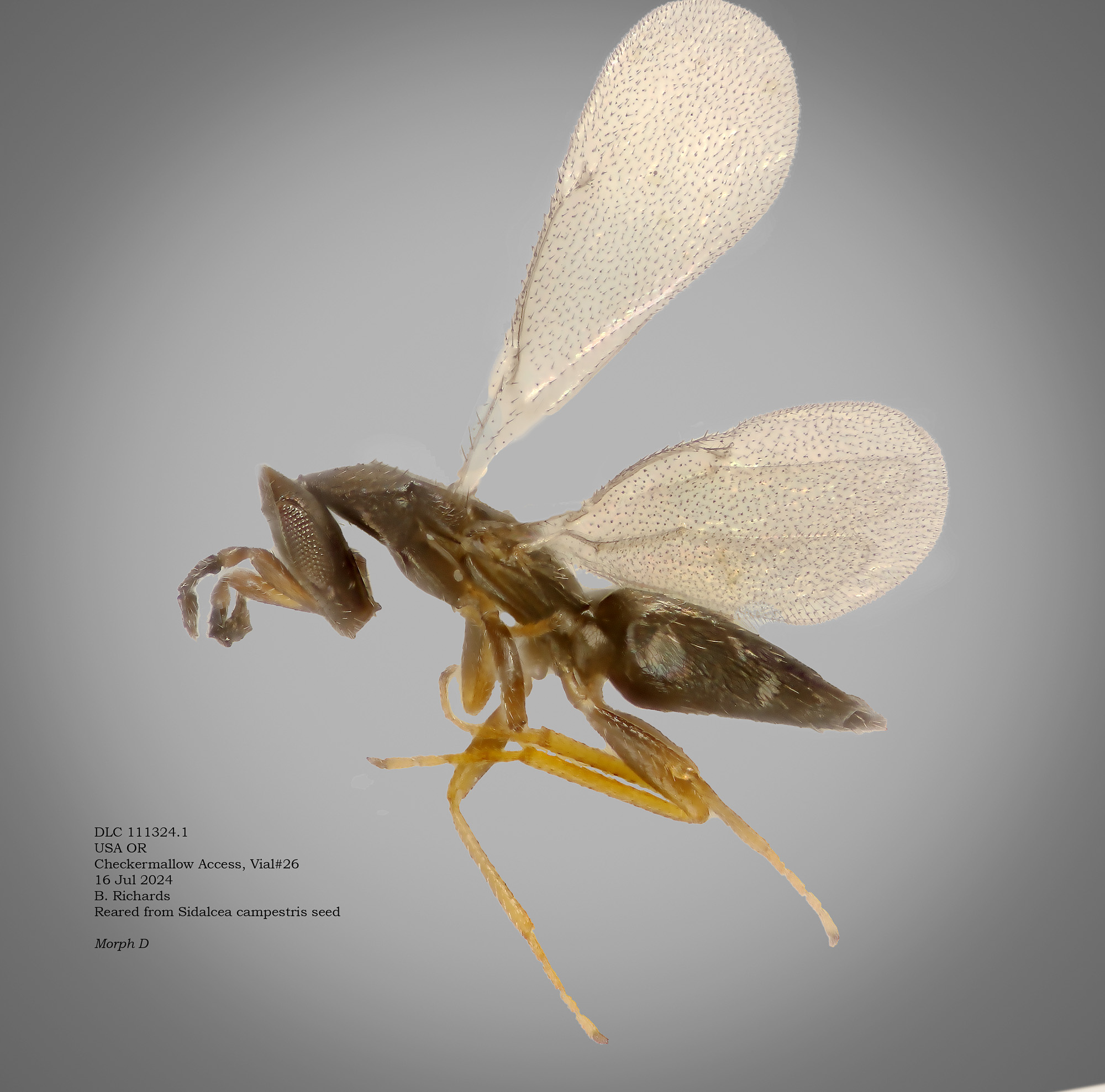
Mellitobia sp., Reared from S. campestris.

Reared from S. oregana. Subfamily Eupeminae.
|
Info on Oregon species based on work of the Institute for Applied Ecology.
Info on Washington species: Quamash EcoResearch.
Photography: David Cappaert
Insect ID: David Cappaert, Marisa Fisher, Cody Blackketter
Update 11 Nov 2024